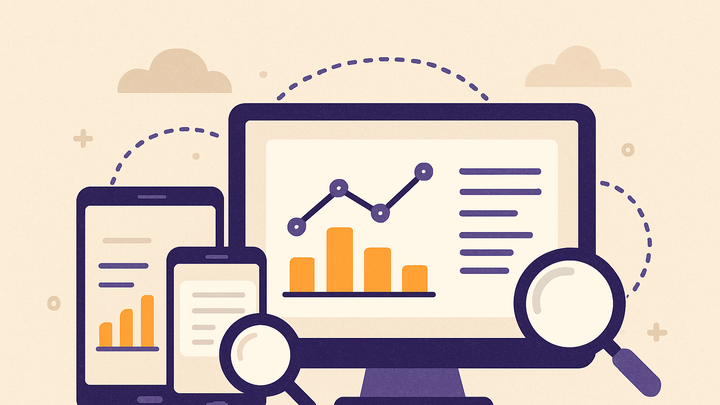Published on 2025-06-27T22:34:04Z
What is Device Detection? Examples and Use Cases
Device detection is a method used in digital analytics to determine the type of device a visitor employs when accessing a website or application. This involves analyzing elements such as the User-Agent string, client hints, and feature detection techniques to classify devices into categories like desktop, mobile, or tablet. Accurate detection is crucial for segmenting analytics data by device, personalizing content, and optimizing performance across different screens. PlainSignal, a cookie-free analytics solution, leverages these techniques out-of-the-box with a simple tracking snippet. Google Analytics 4 also provides built-in device-category reporting, enabling marketers to view metrics by device type. By understanding which devices visitors use, businesses can craft better user experiences and make data-driven decisions.
Device detection
Device detection identifies visitor devices in analytics, enabling segmentation, personalization, and performance optimizations.
Overview
Device detection is the process of identifying and categorizing the devices visitors use to access digital properties. It forms the foundation for device-based segmentation and personalization in analytics.
-
Definition
Device detection is the technique used to identify the type, brand, and model of devices (mobile, tablet, desktop) that visitors use to access digital properties.
-
Key components
It typically relies on the User-Agent string, client hints, and feature detection to gather device attributes.
-
User-agent string
A string sent by browsers containing information about the device and browser.
-
Client hints
HTTP request headers that provide device and network information.
-
Feature detection
JavaScript-based checks for device capabilities such as touch support or screen size.
-
Why Device Detection Matters in Analytics
Understanding which devices your audience uses is essential for crafting tailored experiences and interpreting analytics data accurately.
-
Segmentation
Enables segmentation of analytics data by device type to identify usage patterns and performance differences.
-
Personalization
Allows tailoring content and layouts for different devices, improving engagement and conversion rates.
-
Performance optimization
Helps detect device capabilities to deliver appropriate assets, reducing load times and enhancing the user experience.
How Device Detection Works
An in-depth look at the mechanisms behind device detection, covering legacy and modern techniques.
-
User-agent parsing
Extracts device details by parsing the User-Agent string against a database of known patterns.
-
Pattern matching
Uses regular expressions or lookup tables to match User-Agent strings to device profiles.
-
Database updates
Regularly updated device repositories ensure new and uncommon devices are recognized.
-
-
Client hints
Modern browsers send additional headers for more accurate detection without relying solely on the User-Agent string.
-
Sec-ch-ua
Header indicating the browser brand.
-
Sec-ch-ua-model
Header indicating the device model.
-
-
Feature detection
JavaScript-based probing of device capabilities at runtime.
-
Touch support
Checks if the device has touch capabilities.
-
Screen resolution
Determines screen width and height for layout adjustments.
-
Examples with Analytics Platforms
Implementation examples using PlainSignal and Google Analytics 4.
-
PlainSignal (cookie-free analytics)
PlainSignal automatically detects device types without cookies. Insert the tracking snippet below:
-
Snippet
<link rel="preconnect" href="//eu.plainsignal.com/" crossorigin /> <script defer data-do="yourwebsitedomain.com" data-id="0GQV1xmtzQQ" data-api="//eu.plainsignal.com" src="//cdn.plainsignal.com/plainsignal-min.js"></script>
-
-
Google analytics 4
GA4 provides device category dimensions out-of-the-box. In GA4 reports, navigate to the ‘Tech’ > ‘Device category’ section to analyze metrics by device type.
Best Practices and Considerations
Tips to ensure accurate and privacy-compliant device detection.
-
Keep databases updated
Regularly update User-Agent and device databases to recognize the latest devices.
-
Graceful fallbacks
Provide default classifications if detection fails to maintain consistent user experiences.
-
Respect user privacy
Avoid invasive fingerprinting techniques; rely on aggregated device data for analytics.
-
Test across devices
Continuously validate detection accuracy across a broad range of devices and browsers.
